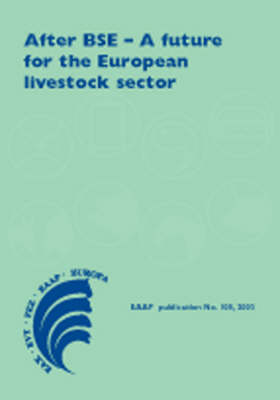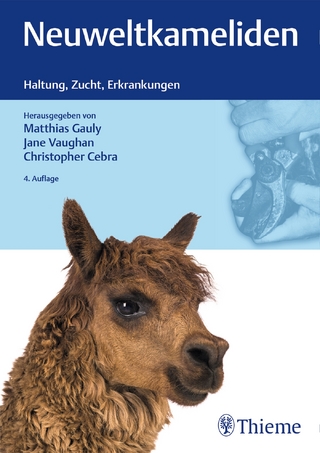
After BSE - A Future for the European Livestock Sector
Seiten
2003
Wageningen Academic Publishers (Verlag)
978-90-76998-23-7 (ISBN)
Wageningen Academic Publishers (Verlag)
978-90-76998-23-7 (ISBN)
- Keine Verlagsinformationen verfügbar
- Artikel merken
EAAP prepared a comprehensive report on BSE, the aim of which was not to defend the sectional interests of animal production, but rather to enlighten all sectors of society who have to make decisions on this difficult topic and to make preparations for other emergencies in the future.
"The BSE epidemic which began in Britain in 1986 plunged the European livestock sector into its largest peacetime crisis in 100 years. Though the epidemic is drawing to a close, the technical and economic impact will continue. Consumer confidence in the integrity of the food chain has been severely damaged.Government agencies and controls have been discredited.
Much has been done to correct the deficiencies that led to the crisis. Much remains to be done. Against this background, EAAP commissioned a group of fourteen experts to review the causes and consequences of the crisis. They were asked to place it in the context of the many factors that are forcing the pace of change in the livestock production sector, and in the food chain which it serves. Based on these analyses, they were charged with mapping the future options for the industry.
This book begins with the BSE epidemic. Present knowledge on its origin and spread are briefly and authoritatively reviewed; original analyses of its economic impact are presented; the management of risk and public information is reviewed; containment measures are documented, and the difficult question of meat and bone meal is fully discussed.
The concurrent challenges facing the industry are then analyzed. These include: the changing requirements of consumers; the growing concentration of economic power in food retailing and processing; the evolving economic structure of livestock farming in the EU 15; the questions of scale and competitiveness, and of intensification and nutrient overloading; the impact of changing EU policies, of globalization, and of integrating ten million farmers from new EU countries.
Discussion of future options begins with two stakeholder analyses - one based on economic, the other on ethical considerations. The requirements for transparency, accountability, traceability, and consumer assurance are discussed, as are the place for regional, special quality and organic products, and the contribution of science. A final Conclusions section presents ideas on how the European livestock sector can respond to the expectations of its customers and of producers themselves."
"The BSE epidemic which began in Britain in 1986 plunged the European livestock sector into its largest peacetime crisis in 100 years. Though the epidemic is drawing to a close, the technical and economic impact will continue. Consumer confidence in the integrity of the food chain has been severely damaged.Government agencies and controls have been discredited.
Much has been done to correct the deficiencies that led to the crisis. Much remains to be done. Against this background, EAAP commissioned a group of fourteen experts to review the causes and consequences of the crisis. They were asked to place it in the context of the many factors that are forcing the pace of change in the livestock production sector, and in the food chain which it serves. Based on these analyses, they were charged with mapping the future options for the industry.
This book begins with the BSE epidemic. Present knowledge on its origin and spread are briefly and authoritatively reviewed; original analyses of its economic impact are presented; the management of risk and public information is reviewed; containment measures are documented, and the difficult question of meat and bone meal is fully discussed.
The concurrent challenges facing the industry are then analyzed. These include: the changing requirements of consumers; the growing concentration of economic power in food retailing and processing; the evolving economic structure of livestock farming in the EU 15; the questions of scale and competitiveness, and of intensification and nutrient overloading; the impact of changing EU policies, of globalization, and of integrating ten million farmers from new EU countries.
Discussion of future options begins with two stakeholder analyses - one based on economic, the other on ethical considerations. The requirements for transparency, accountability, traceability, and consumer assurance are discussed, as are the place for regional, special quality and organic products, and the contribution of science. A final Conclusions section presents ideas on how the European livestock sector can respond to the expectations of its customers and of producers themselves."
| Erscheint lt. Verlag | 11.8.2003 |
|---|---|
| Reihe/Serie | EAAP Scientific Series ; 108 |
| Sprache | englisch |
| Maße | 170 x 240 mm |
| Gewicht | 1 g |
| Themenwelt | Veterinärmedizin ► Großtier |
| Weitere Fachgebiete ► Land- / Forstwirtschaft / Fischerei | |
| ISBN-10 | 90-76998-23-X / 907699823X |
| ISBN-13 | 978-90-76998-23-7 / 9789076998237 |
| Zustand | Neuware |
| Haben Sie eine Frage zum Produkt? |
Mehr entdecken
aus dem Bereich
aus dem Bereich
Arbeitstechniken in der Pferde- und Eselpraxis - MemoVet
Buch | Softcover (2018)
Schattauer (Verlag)
CHF 72,90
ein Leitfaden zur Diagnostik, Therapie und Prophylaxe bei Lamas und …
Buch | Hardcover (2023)
Schlütersche (Verlag)
CHF 208,55


